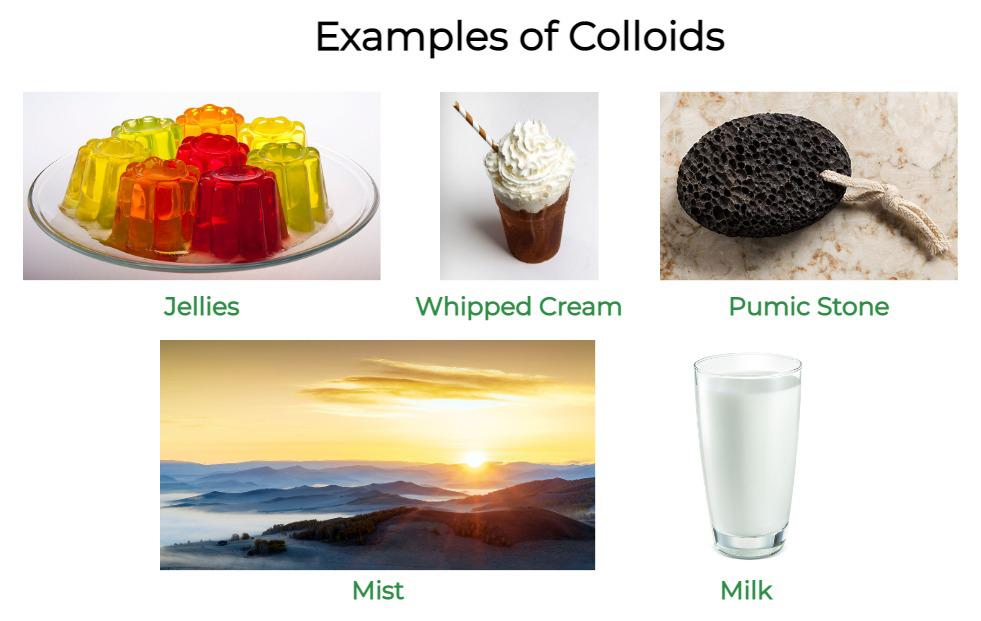Types of Colloidal Solutions or Colloids

Colloidal solutions, or colloids, encompass a wide range of heterogeneous mixtures where one substance, typically referred to as the dispersed phase, is dispersed evenly throughout another substance, known as the dispersion medium. Colloids exhibit unique properties due to their intermediate particle size between individual molecules and those found in suspensions. Here are some common types of colloidal solutions or colloids:
-
Sol:
- A sol is a colloidal solution where solid particles are dispersed in a liquid medium.
- Examples include:
- Paint: Pigment particles dispersed in a liquid medium, such as water or oil.
- Blood: Suspended cells and proteins dispersed in plasma, the liquid component of blood.
- Ink: Pigment or dye particles dispersed in a liquid solvent.
- Starch solution: Starch granules dispersed in water.
-
Emulsion:
- An emulsion is a colloidal solution where two immiscible liquids are dispersed in each other.
- Types of emulsions include:
- Oil-in-water (O/W) emulsion: Oil droplets dispersed in a water medium. Example: Milk.
- Water-in-oil (W/O) emulsion: Water droplets dispersed in an oil medium. Example: Butter.
-
Gel:
- A gel is a colloidal solution where a solid network is dispersed in a liquid medium, forming a semi-solid material.
- Examples include:
- Gelatin: Protein molecules form a network structure when dispersed in water, resulting in a gel.
- Agar: Polysaccharide molecules derived from seaweed form a gel when dispersed in water.
- Silica gel: Porous silicon dioxide particles dispersed in a liquid medium, often used as a desiccant.
-
Foam:
- Foam is a colloidal dispersion of gas bubbles in a liquid or solid medium.
- Examples include:
- Whipped cream: Air bubbles dispersed in a liquid cream.
- Shaving cream: Gas bubbles dispersed in a liquid or solid soap medium.
- Beer foam: Carbon dioxide bubbles dispersed in a liquid beer medium.
-
Aerosol:
- An aerosol is a colloidal solution where solid or liquid particles are dispersed in a gas medium.
- Examples include:
- Fog: Water droplets suspended in air.
- Smoke: Solid or liquid particles suspended in air.
- Spray paint: Pigment particles dispersed in a gas propellant.
-
Hydrosol:
- A hydrosol is a colloidal solution where nanoparticles of a substance are dispersed in water.
- Examples include:
- Silver hydrosol: Silver nanoparticles dispersed in water, used for various applications including antimicrobial treatments.
- Gold hydrosol: Gold nanoparticles dispersed in water, used in nanotechnology and biomedical research.
These are just a few examples of the diverse types of colloidal solutions or colloids found in nature and utilized in various industries and applications. Colloids play important roles in fields such as chemistry, materials science, medicine, and food science.
Thank you,
